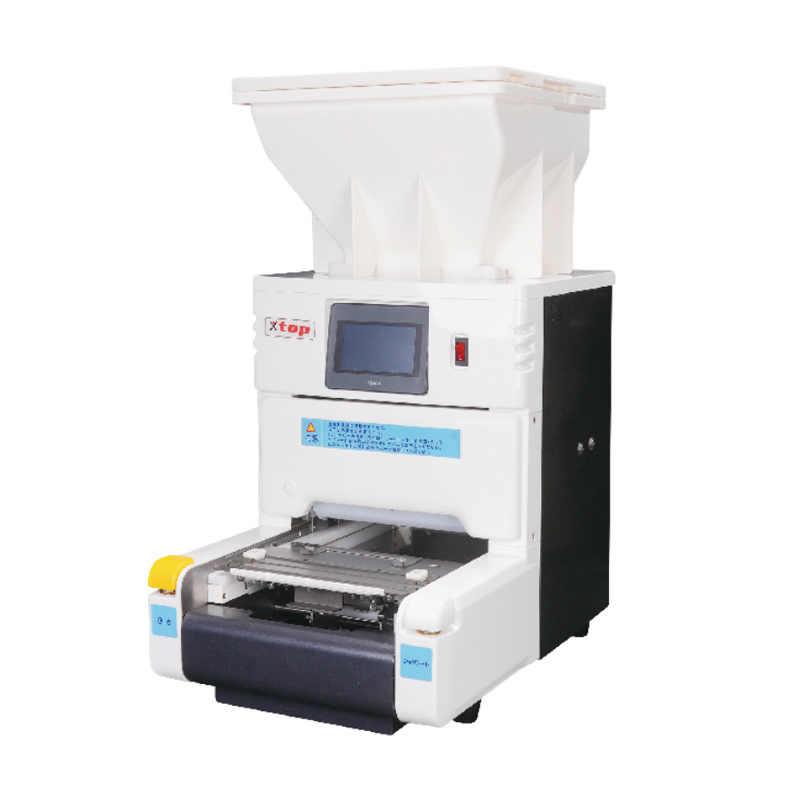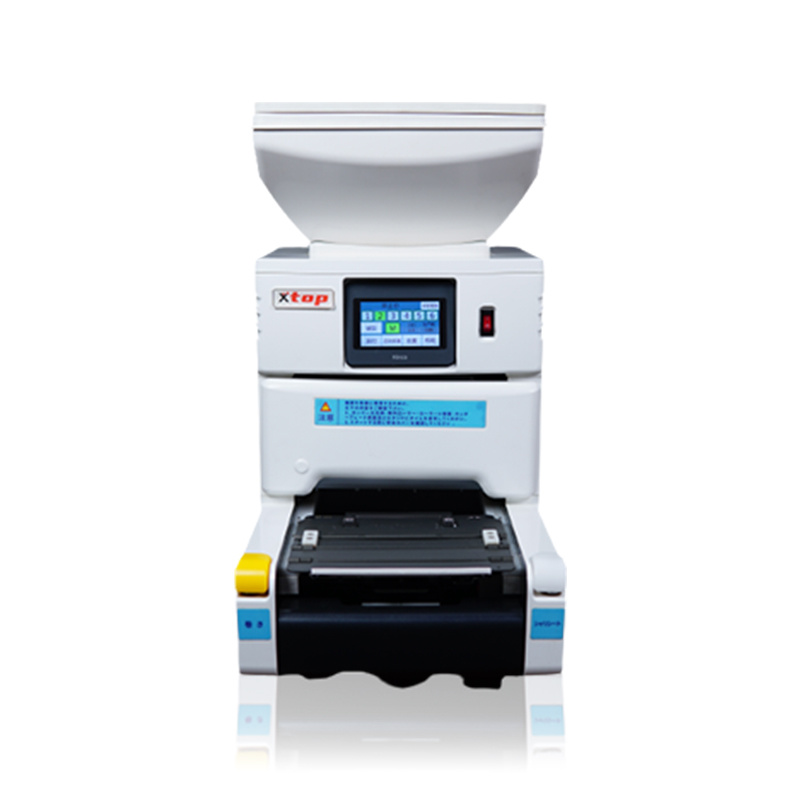The Future of Sushi Production: Innovations in Automatic Sushi Rice Maki
Release Time:2025-07-27
The Future of Sushi Production: Innovations in Automatic Sushi Rice Maki
Table of Contents
- 1. Introduction to the Evolution of Sushi Production
- 2. The Importance of Automatic Sushi Rice Maki Systems
- 3. Key Technological Advancements in Sushi Production
- 4. Benefits of Automated Sushi Rice Maki Production
- 5. Challenges Facing Automation in Sushi Production
- 6. Future Trends in Sushi Production Technology
- 7. Sustainability in Sushi Production
- 8. Frequently Asked Questions
- 9. Conclusion: Embracing the Future of Sushi Manufacturing
1. Introduction to the Evolution of Sushi Production
The art of sushi making has evolved significantly over the years, transitioning from a traditional craft to a highly sophisticated and automated process. With the increasing global demand for sushi, restaurants and food manufacturers are compelled to adopt innovative technologies that streamline production while maintaining the quality and authenticity of this beloved dish. *Automatic sushi rice maki* systems represent a pivotal shift in how sushi is produced, allowing for greater consistency, speed, and quality.
2. The Importance of Automatic Sushi Rice Maki Systems
In a fast-paced food industry, efficiency is paramount. The adoption of automatic sushi rice maki systems not only meets the high volume of sushi production required by restaurants and grocery stores but also ensures that the final product is of superior quality. These systems are designed to replicate the intricate hand-rolling techniques traditionally used by skilled sushi chefs, but with enhanced precision and uniformity.
2.1 Enhancing Consistency and Quality
One of the major advantages of automatic sushi rice maki systems is their ability to produce sushi rolls that are consistent in size, shape, and taste. This consistency ensures that customers enjoy the same quality experience, regardless of where they purchase their sushi.
2.2 Meeting Rising Consumer Demands
As sushi grows in popularity across various demographics, the demand for quick, affordable, and high-quality sushi has never been higher. Automated systems provide a solution to this challenge, enabling producers to meet consumer expectations without compromising on taste or quality.
3. Key Technological Advancements in Sushi Production
The technological landscape of sushi production is rapidly changing. Several advancements are pivotal in revolutionizing the industry, making automatic sushi rice maki systems increasingly effective.
3.1 Precision Cooking Techniques
State-of-the-art cooking devices ensure that sushi rice is cooked to perfection. The precision of temperature control and timing is critical in achieving the ideal texture and flavor of rice, making it suitable for rolling.
3.2 Advanced Rolling Mechanisms
Modern rolling mechanisms replicate the hand-rolling techniques of sushi chefs. These machines use advanced sensors and robotics to roll rice and seaweed perfectly, preventing tears or irregularities that can compromise the sushi's integrity.
3.3 Smart Quality Control
With integrated sensors and AI technology, automatic sushi rice maki systems can monitor the quality of ingredients in real-time. This ensures that only the freshest and highest-quality components are used in production, maintaining the standard expected in sushi cuisine.
4. Benefits of Automated Sushi Rice Maki Production
The transition to automated sushi production offers numerous advantages:
4.1 Increased Production Efficiency
Automation significantly reduces the time required to produce sushi. High-capacity machines can roll hundreds of sushi pieces in a fraction of the time it would take a chef, allowing for faster service.
4.2 Cost-Effectiveness
While the initial investment in automated systems can be substantial, the long-term savings in labor costs and increased production rates can lead to improved profitability for restaurants and food manufacturers.
4.3 Enhanced Food Safety
Automated systems minimize human contact with food during production, reducing the risk of contamination. This is particularly important in the food industry, where hygiene standards are paramount.
5. Challenges Facing Automation in Sushi Production
Despite the benefits, there are challenges that need to be addressed in the further development of automatic sushi rice maki systems.
5.1 Initial Investment Costs
The upfront costs associated with acquiring advanced sushi production technology can be a barrier, especially for small businesses. However, the return on investment often justifies the expense over time.
5.2 Maintaining Traditional Craftsmanship
The introduction of technology can lead to concerns about losing the artistry and craftsmanship associated with traditional sushi making. Finding a balance between automation and maintaining the essence of sushi preparation is crucial.
5.3 Training and Adaptation
Employees must be trained to operate these new systems effectively. Resistance to change can also be an issue, as some staff may prefer traditional methods over automated processes.
6. Future Trends in Sushi Production Technology
The future of sushi production is bright, with several trends indicating where the industry is headed.
6.1 Integration of AI and Robotics
As AI technology continues to advance, we can expect to see more robotic systems that can learn and adapt to various sushi-making techniques, further improving efficiency and quality.
6.2 Customization Options
Future automated systems may offer customizable sushi options for consumers, allowing for personalized rolls that cater to individual preferences, dietary restrictions, and ingredient availability.
6.3 Sustainable Practices
With growing consumer awareness about sustainability, future innovations may focus on environmentally friendly practices in sushi production, including sourcing local ingredients and reducing waste.
7. Sustainability in Sushi Production
As the sushi industry evolves, so does the emphasis on sustainable practices. Automatic sushi rice maki systems can be designed with sustainability in mind.
7.1 Sourcing Ingredients Responsibly
Many producers are now looking to source seafood and other ingredients sustainably. Automated systems can adapt to use local, seasonal ingredients, reducing transportation emissions and supporting local economies.
7.2 Minimizing Waste
Automation can also help reduce food waste in the production process. Precise measurements and controlled production limits can ensure that excess food is minimized, aligning with sustainable practices.
8. Frequently Asked Questions
8.1 What is an automatic sushi rice maki system?
An automatic sushi rice maki system is a machine designed to automate the process of making sushi rolls, ensuring precision in cooking, rolling, and quality control.
8.2 How does automation impact sushi quality?
Automation can enhance sushi quality by ensuring consistency in size and flavor while minimizing human error and contamination risks.
8.3 Are automated sushi systems cost-effective for small businesses?
While the initial investment may be high, over time, the efficiency and labor savings can lead to improved profitability for small businesses.
8.4 Can automation replace traditional sushi chefs?
While automation can take over repetitive tasks, the artistry and creativity of traditional sushi chefs remain invaluable and irreplaceable.
8.5 What are the environmental benefits of automated sushi production?
Automated sushi production can be designed to minimize waste and support sustainable sourcing practices, ultimately benefiting the environment.
9. Conclusion: Embracing the Future of Sushi Manufacturing
The future of sushi production lies in the integration of advanced technology that not only enhances efficiency but also maintains the quality and tradition of sushi making. Automatic sushi rice maki systems are set to redefine the industry by meeting the growing demand for sushi while addressing the challenges of sustainability and quality control. As we embrace these innovations, the sushi industry can look forward to a promising future that balances tradition with modern technology.
Keywords:Automatic Sushi Rice Maki
Previous
CATEGORY
Related News
2024-02-03
Related










